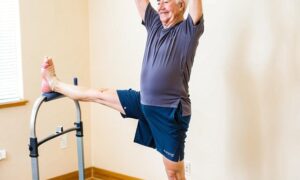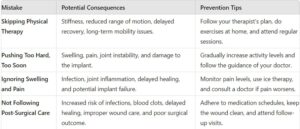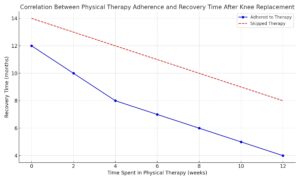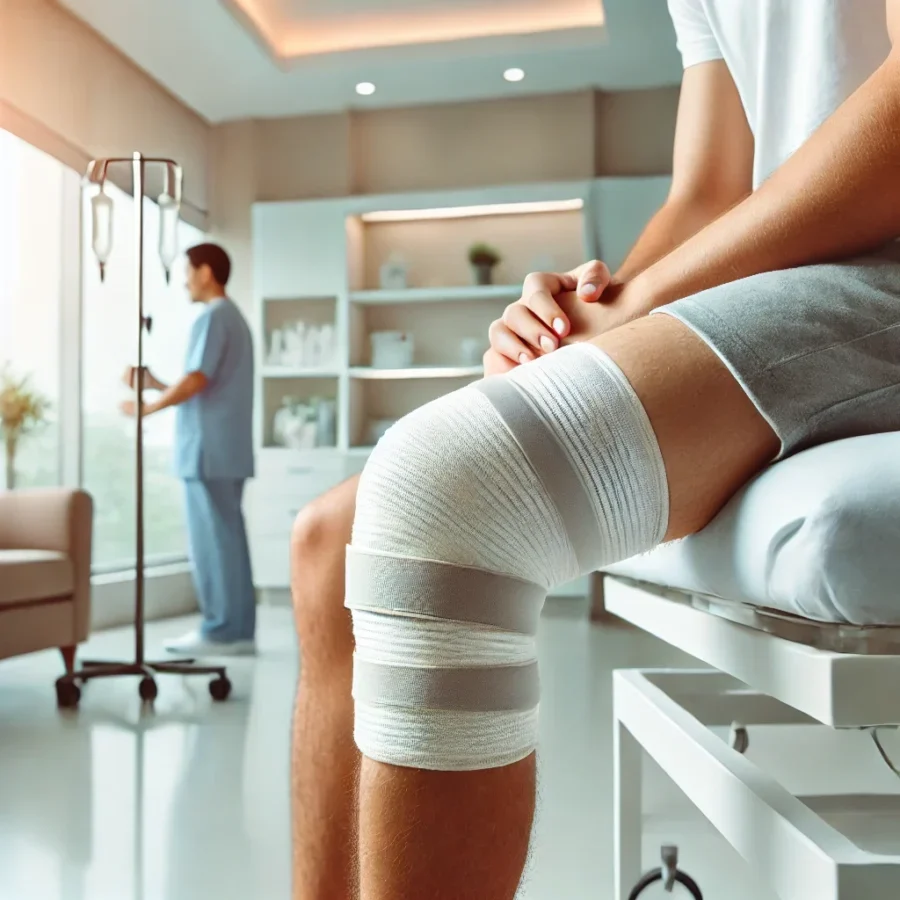Introduction
Knee replacement surgery can significantly improve mobility and relieve pain for individuals suffering from severe arthritis or injury. However, the recovery process is just as crucial as the surgery itself. Many patients unknowingly make common mistakes during their rehabilitation, which can delay recovery and impact long-term outcomes. In this article, we’ll explore the top 5 mistakes after knee replacement surgery and how to avoid them, ensuring a smoother, quicker recovery.
1. Skipping Physical Therapy

One of the most important components of recovery after knee replacement surgery is physical therapy. Unfortunately, some patients make the mistake of skipping or neglecting these sessions, assuming that rest alone will help them recover. This can lead to stiffness, weakness, and delayed healing.
Why Physical Therapy is Important:
- Improves Range of Motion: Post-surgery, your knee may feel stiff, and movement could be limited. Regular physical therapy exercises can help improve flexibility.
- Strengthens Muscles: Building strength in the muscles around the knee is essential to support the joint and prevent future injuries.
- Reduces Swelling and Pain: Physical therapy promotes blood flow, which reduces inflammation and pain.
Example: A study published in The Journal of Arthroplasty showed that patients who adhered to a physical therapy regimen had significantly better outcomes and shorter recovery times compared to those who didn’t.
2. Pushing Too Hard, Too Soon
While it’s essential to stay active after knee replacement surgery, pushing yourself too hard can lead to complications like swelling, pain, or even injury. Some patients may feel the pressure to get back to their usual activities as soon as possible, but overexertion can delay the healing process.
What Happens When You Push Too Hard:
- Swelling: Overdoing exercises can cause fluid buildup around the knee.
- Joint Instability: Forcing movement before the joint is ready can weaken the implant or surrounding ligaments.
- Increased Pain: Overuse can cause pain, which could set back your recovery.
Expert Advice:
Dr. Matthew Abdel, an orthopedic surgeon at the Mayo Clinic, emphasizes, “It’s crucial to find the right balance between staying active and resting. Patients should follow their physical therapist’s guidance to avoid overstressing the knee.”
3. Ignoring Swelling and Pain

Many patients mistakenly think that pain and swelling are normal after surgery and ignore these symptoms. While some discomfort is expected, persistent swelling or pain could be a sign of complications like infection or joint instability.
Recognizing the Warning Signs:
- Excessive Swelling: It’s normal to have mild swelling for a few weeks, but if your knee is unusually swollen or warm to the touch, seek medical advice.
- Uncontrolled Pain: While mild pain is expected, intense, constant pain should not be ignored.
Tips to Manage Pain and Swelling:
- Ice Therapy: Applying ice packs to the knee can help reduce swelling.
- Elevation: Elevating your leg above your heart helps decrease inflammation.
- Pain Medication: Follow your doctor’s recommendations on pain management.
4. Not Following Post-Surgical Guidelines
Your doctor will provide you with specific guidelines for care following surgery, including medication instructions, wound care, and activity limitations. Not adhering to these guidelines can lead to infections, blood clots, or poor healing.
Common Mistakes Include:
- Not Taking Prescribed Medications: Skipping medications like blood thinners or antibiotics increases the risk of complications.
- Improper Wound Care: Not keeping the incision clean and dry can lead to infections.
- Neglecting Follow-up Appointments: Regular check-ups are vital to monitor healing progress.
Statistics: According to the American Academy of Orthopedic Surgeons, complications like infections occur in about 1% of knee replacement surgeries, and not following post-op guidelines increases the risk.
5. Resuming Normal Activities Too Soon

Many patients are eager to return to their normal activities, such as driving, working, or exercising. However, rushing back to these activities can cause setbacks in recovery or damage to the implant.
How to Avoid this Mistake:
- Ask Your Doctor: Always consult your healthcare provider before resuming any activities.
- Listen to Your Body: Pay attention to your knee’s pain levels and swelling after performing activities.
- Start Slow: Ease into your usual routine rather than diving in too quickly.
Example: A patient who resumed high-impact exercises like running too soon after surgery ended up needing a revision surgery because the implant became loose.
Table: Top 5 Mistakes After Knee Replacement Surgery

Source: American Academy of Orthopedic Surgeons
FAQs
Q: How long does it take to fully recover from knee replacement surgery?
A: Full recovery typically takes around 3 to 6 months. However, some patients may take up to a year to regain full mobility and strength.
Q: When can I start driving after knee replacement surgery?
A: Most patients can resume driving 4 to 6 weeks after surgery, but it’s essential to consult your doctor before getting behind the wheel.
Q: What are the signs of infection after knee replacement surgery?
A: Signs include increased swelling, redness, warmth, and fever. If you experience any of these symptoms, seek medical attention immediately.
Q: Can I avoid physical therapy if I feel fine?
A: No. Even if you feel fine, physical therapy is crucial for regaining strength and flexibility. Skipping therapy can lead to long-term complications.
Q: Is it normal to have swelling months after knee replacement surgery?
A: Mild swelling is common for several months after surgery, especially after physical activity. However, excessive swelling should be checked by a healthcare professional.
Conclusion
Knee replacement surgery can be life-changing, but the recovery process requires time, patience, and careful attention to avoid complications. By avoiding these top five mistakes—skipping physical therapy, pushing too hard, ignoring symptoms, neglecting post-op care, and resuming activities too soon—you can ensure a smoother, quicker recovery. Always follow your doctor’s instructions, attend physical therapy, and listen to your body to make the most of your new knee joint.
Correlation Between Physical Therapy Adherence and Recovery Time After Knee Replacement


